Juan Tapia
Impact of Synthetic Images on Morphing Attack Detection Using a Siamese Network
Mar 20, 2024Abstract:This paper evaluated the impact of synthetic images on Morphing Attack Detection (MAD) using a Siamese network with a semi-hard-loss function. Intra and cross-dataset evaluations were performed to measure synthetic image generalisation capabilities using a cross-dataset for evaluation. Three different pre-trained networks were used as feature extractors from traditional MobileNetV2, MobileNetV3 and EfficientNetB0. Our results show that MAD trained on EfficientNetB0 from FERET, FRGCv2, and FRLL can reach a lower error rate in comparison with SOTA. Conversely, worse performances were reached when the system was trained only with synthetic images. A mixed approach (synthetic + digital) database may help to improve MAD and reduce the error rate. This fact shows that we still need to keep going with our efforts to include synthetic images in the training process.
Double Trouble? Impact and Detection of Duplicates in Face Image Datasets
Jan 25, 2024Abstract:Various face image datasets intended for facial biometrics research were created via web-scraping, i.e. the collection of images publicly available on the internet. This work presents an approach to detect both exactly and nearly identical face image duplicates, using file and image hashes. The approach is extended through the use of face image preprocessing. Additional steps based on face recognition and face image quality assessment models reduce false positives, and facilitate the deduplication of the face images both for intra- and inter-subject duplicate sets. The presented approach is applied to five datasets, namely LFW, TinyFace, Adience, CASIA-WebFace, and C-MS-Celeb (a cleaned MS-Celeb-1M variant). Duplicates are detected within every dataset, with hundreds to hundreds of thousands of duplicates for all except LFW. Face recognition and quality assessment experiments indicate a minor impact on the results through the duplicate removal. The final deduplication data is publicly available.
SynFacePAD 2023: Competition on Face Presentation Attack Detection Based on Privacy-aware Synthetic Training Data
Nov 09, 2023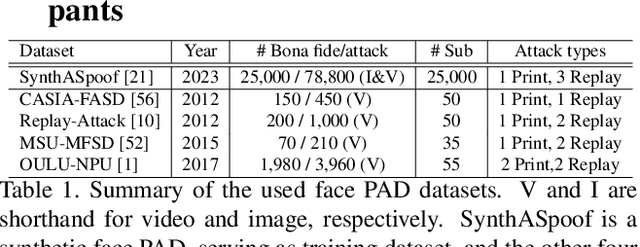


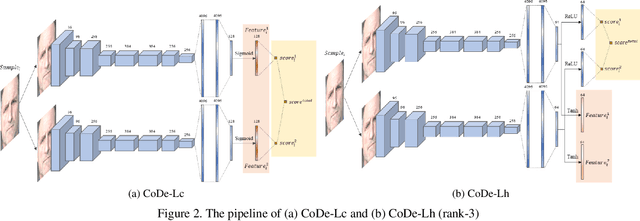
Abstract:This paper presents a summary of the Competition on Face Presentation Attack Detection Based on Privacy-aware Synthetic Training Data (SynFacePAD 2023) held at the 2023 International Joint Conference on Biometrics (IJCB 2023). The competition attracted a total of 8 participating teams with valid submissions from academia and industry. The competition aimed to motivate and attract solutions that target detecting face presentation attacks while considering synthetic-based training data motivated by privacy, legal and ethical concerns associated with personal data. To achieve that, the training data used by the participants was limited to synthetic data provided by the organizers. The submitted solutions presented innovations and novel approaches that led to outperforming the considered baseline in the investigated benchmarks.
Iris Liveness Detection Competition (LivDet-Iris) -- The 2023 Edition
Oct 06, 2023



Abstract:This paper describes the results of the 2023 edition of the ''LivDet'' series of iris presentation attack detection (PAD) competitions. New elements in this fifth competition include (1) GAN-generated iris images as a category of presentation attack instruments (PAI), and (2) an evaluation of human accuracy at detecting PAI as a reference benchmark. Clarkson University and the University of Notre Dame contributed image datasets for the competition, composed of samples representing seven different PAI categories, as well as baseline PAD algorithms. Fraunhofer IGD, Beijing University of Civil Engineering and Architecture, and Hochschule Darmstadt contributed results for a total of eight PAD algorithms to the competition. Accuracy results are analyzed by different PAI types, and compared to human accuracy. Overall, the Fraunhofer IGD algorithm, using an attention-based pixel-wise binary supervision network, showed the best-weighted accuracy results (average classification error rate of 37.31%), while the Beijing University of Civil Engineering and Architecture's algorithm won when equal weights for each PAI were given (average classification rate of 22.15%). These results suggest that iris PAD is still a challenging problem.
Towards minimizing efforts for Morphing Attacks -- Deep embeddings for morphing pair selection and improved Morphing Attack Detection
May 29, 2023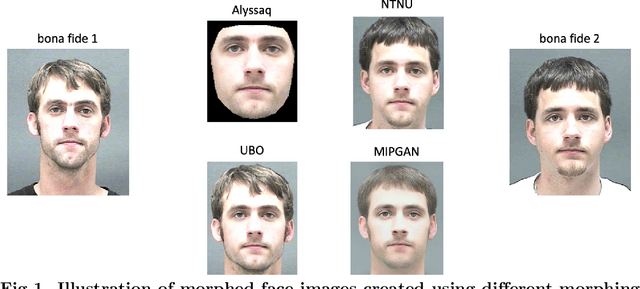
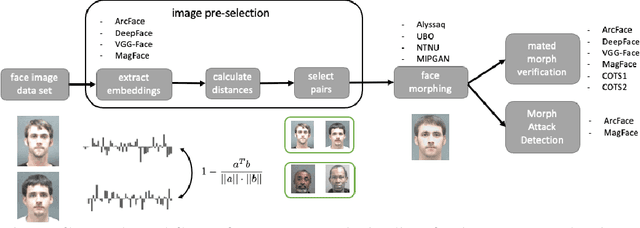
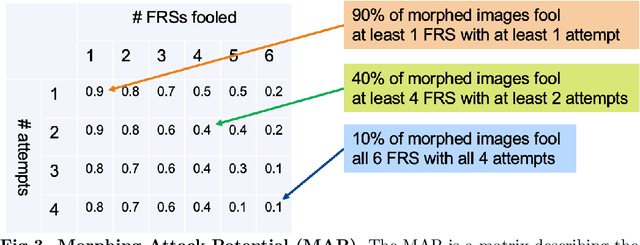
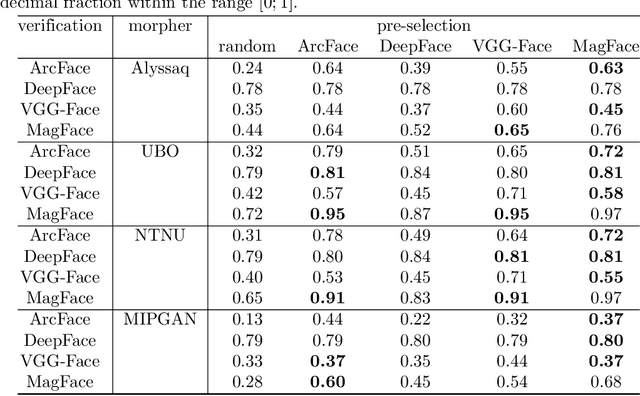
Abstract:Face Morphing Attacks pose a threat to the security of identity documents, especially with respect to a subsequent access control process, because it enables both individuals involved to exploit the same document. In this study, face embeddings serve two purposes: pre-selecting images for large-scale Morphing Attack generation and detecting potential Morphing Attacks. We build upon previous embedding studies in both use cases using the MagFace model. For the first objective, we employ an pre-selection algorithm that pairs individuals based on face embedding similarity. We quantify the attack potential of differently morphed face images to compare the usability of pre-selection in automatically generating numerous successful Morphing Attacks. Regarding the second objective, we compare embeddings from two state-of-the-art face recognition systems in terms of their ability to detect Morphing Attacks. Our findings demonstrate that ArcFace and MagFace provide valuable face embeddings for image pre-selection. Both open-source and COTS face recognition systems are susceptible to generated attacks, particularly when pre-selection is based on embeddings rather than random pairing which was only constrained by soft biometrics. More accurate face recognition systems exhibit greater vulnerability to attacks, with COTS systems being the most susceptible. Additionally, MagFace embeddings serve as a robust alternative for detecting morphed face images compared to the previously used ArcFace embeddings. The results endorse the advantages of face embeddings in more effective image pre-selection for face morphing and accurate detection of morphed face images. This is supported by extensive analysis of various designed attacks. The MagFace model proves to be a powerful alternative to the commonly used ArcFace model for both objectives, pre-selection and attack detection.
Face Feature Visualisation of Single Morphing Attack Detection
Apr 25, 2023Abstract:This paper proposes an explainable visualisation of different face feature extraction algorithms that enable the detection of bona fide and morphing images for single morphing attack detection. The feature extraction is based on raw image, shape, texture, frequency and compression. This visualisation may help to develop a Graphical User Interface for border policies and specifically for border guard personnel that have to investigate details of suspect images. A Random forest classifier was trained in a leave-one-out protocol on three landmarks-based face morphing methods and a StyleGAN-based morphing method for which morphed images are available in the FRLL database. For morphing attack detection, the Discrete Cosine-Transformation-based method obtained the best results for synthetic images and BSIF for landmark-based image features.
Flickr-PAD: New Face High-Resolution Presentation Attack Detection Database
Apr 25, 2023Abstract:Nowadays, Presentation Attack Detection is a very active research area. Several databases are constituted in the state-of-the-art using images extracted from videos. One of the main problems identified is that many databases present a low-quality, small image size and do not represent an operational scenario in a real remote biometric system. Currently, these images are captured from smartphones with high-quality and bigger resolutions. In order to increase the diversity of image quality, this work presents a new PAD database based on open-access Flickr images called: "Flickr-PAD". Our new hand-made database shows high-quality printed and screen scenarios. This will help researchers to compare new approaches to existing algorithms on a wider database. This database will be available for other researchers. A leave-one-out protocol was used to train and evaluate three PAD models based on MobileNet-V3 (small and large) and EfficientNet-B0. The best result was reached with MobileNet-V3 large with BPCER10 of 7.08% and BPCER20 of 11.15%.
Considerations on the Evaluation of Biometric Quality Assessment Algorithms
Mar 23, 2023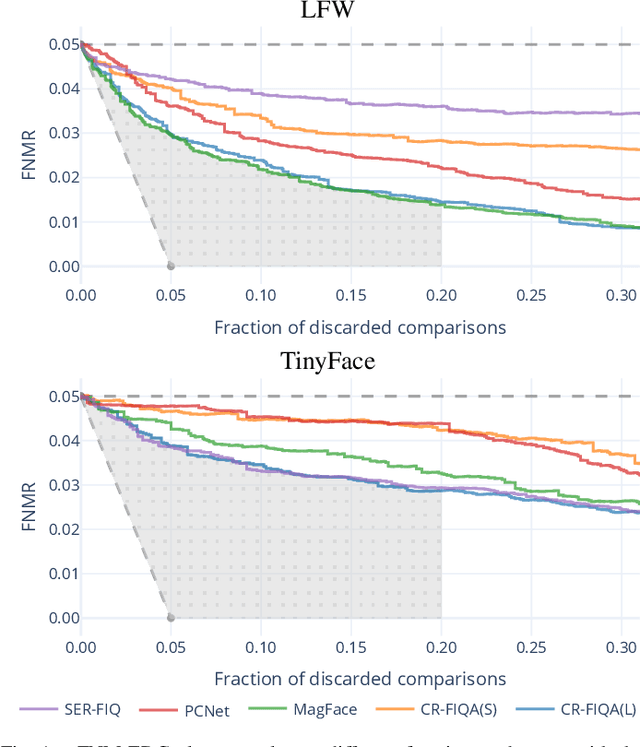
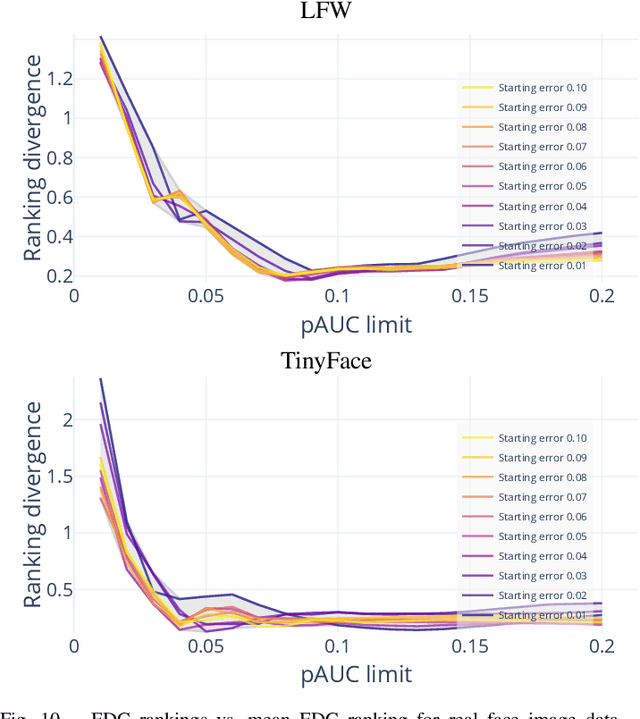
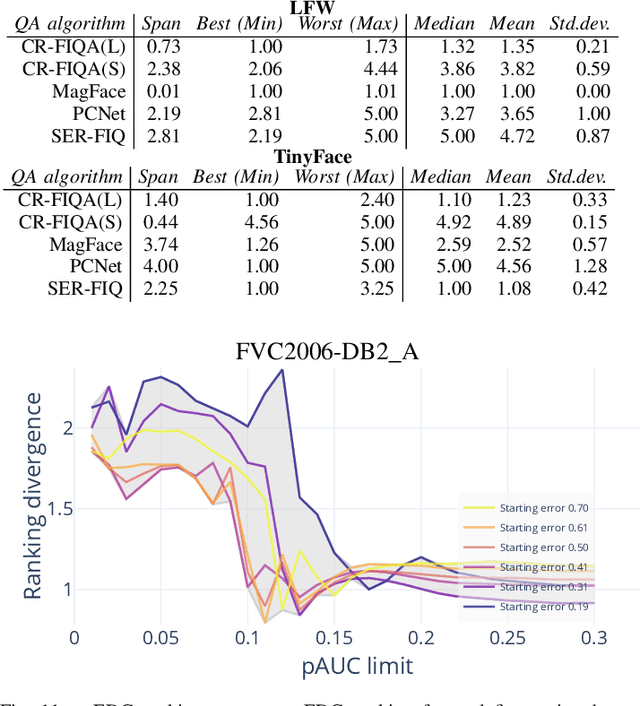
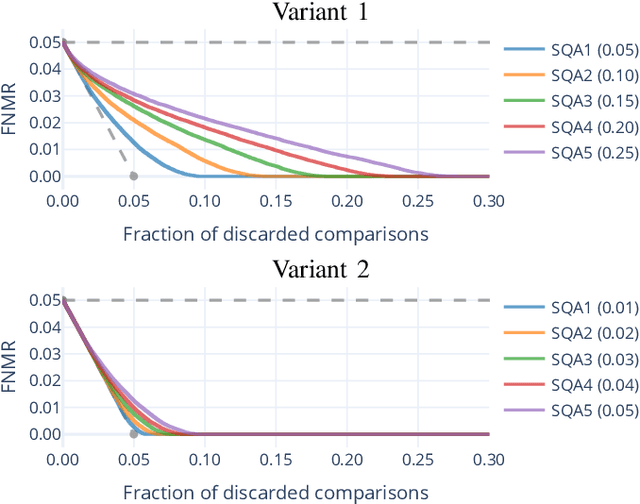
Abstract:Quality assessment algorithms can be used to estimate the utility of a biometric sample for the purpose of biometric recognition. "Error versus Discard Characteristic" (EDC) plots, and "partial Area Under Curve" (pAUC) values of curves therein, are generally used by researchers to evaluate the predictive performance of such quality assessment algorithms. An EDC curve depends on an error type such as the "False Non Match Rate" (FNMR), a quality assessment algorithm, a biometric recognition system, a set of comparisons each corresponding to a biometric sample pair, and a comparison score threshold corresponding to a starting error. To compute an EDC curve, comparisons are progressively discarded based on the associated samples' lowest quality scores, and the error is computed for the remaining comparisons. Additionally, a discard fraction limit or range must be selected to compute pAUC values, which can then be used to quantitatively rank quality assessment algorithms. This paper discusses and analyses various details for this kind of quality assessment algorithm evaluation, including general EDC properties, interpretability improvements for pAUC values based on a hard lower error limit and a soft upper error limit, the use of relative instead of discrete rankings, stepwise vs. linear curve interpolation, and normalisation of quality scores to a [0, 100] integer range. We also analyse the stability of quantitative quality assessment algorithm rankings based on pAUC values across varying pAUC discard fraction limits and starting errors, concluding that higher pAUC discard fraction limits should be preferred. The analyses are conducted both with synthetic data and with real data for a face image quality assessment scenario, with a focus on general modality-independent conclusions for EDC evaluations.
Effect of Lossy Compression Algorithms on Face Image Quality and Recognition
Feb 24, 2023



Abstract:Lossy face image compression can degrade the image quality and the utility for the purpose of face recognition. This work investigates the effect of lossy image compression on a state-of-the-art face recognition model, and on multiple face image quality assessment models. The analysis is conducted over a range of specific image target sizes. Four compression types are considered, namely JPEG, JPEG 2000, downscaled PNG, and notably the new JPEG XL format. Frontal color images from the ColorFERET database were used in a Region Of Interest (ROI) variant and a portrait variant. We primarily conclude that JPEG XL allows for superior mean and worst case face recognition performance especially at lower target sizes, below approximately 5kB for the ROI variant, while there appears to be no critical advantage among the compression types at higher target sizes. Quality assessments from modern models correlate well overall with the compression effect on face recognition performance.
Improving Presentation Attack Detection for ID Cards on Remote Verification Systems
Jan 23, 2023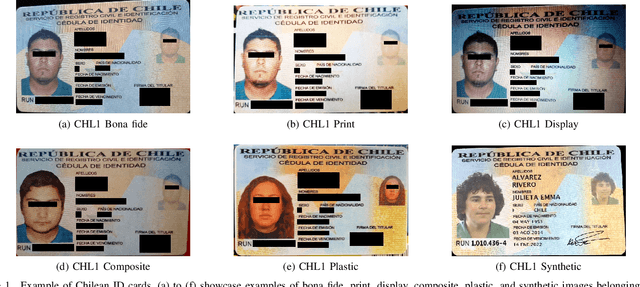
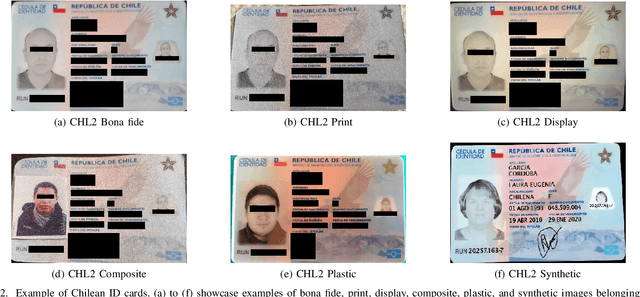
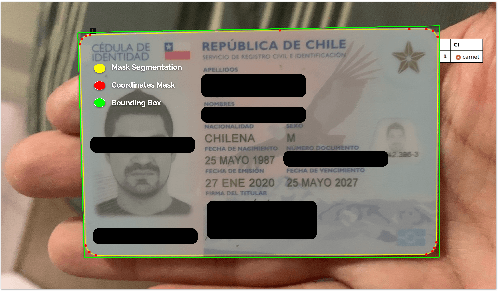
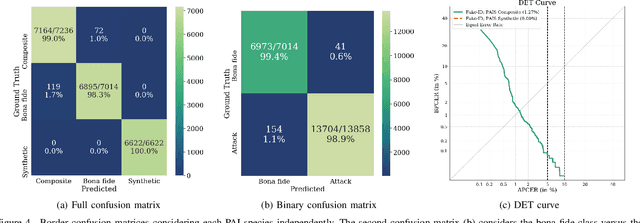
Abstract:In this paper, an updated two-stage, end-to-end Presentation Attack Detection method for remote biometric verification systems of ID cards, based on MobileNetV2, is presented. Several presentation attack species such as printed, display, composite (based on cropped and spliced areas), plastic (PVC), and synthetic ID card images using different capture sources are used. This proposal was developed using a database consisting of 190.000 real case Chilean ID card images with the support of a third-party company. Also, a new framework called PyPAD, used to estimate multi-class metrics compliant with the ISO/IEC 30107-3 standard was developed, and will be made available for research purposes. Our method is trained on two convolutional neural networks separately, reaching BPCER\textsubscript{100} scores on ID cards attacks of 1.69\% and 2.36\% respectively. The two-stage method using both models together can reach a BPCER\textsubscript{100} score of 0.92\%.
 Add to Chrome
Add to Chrome Add to Firefox
Add to Firefox Add to Edge
Add to Edge